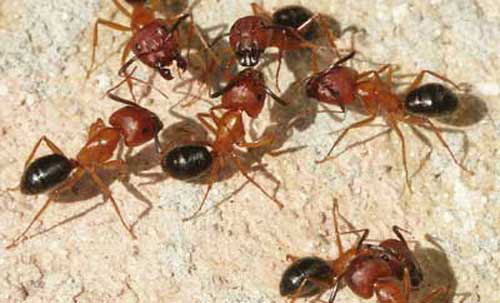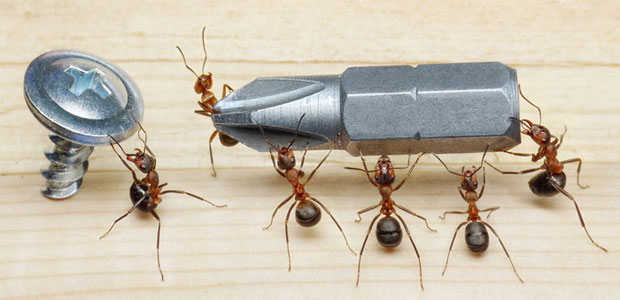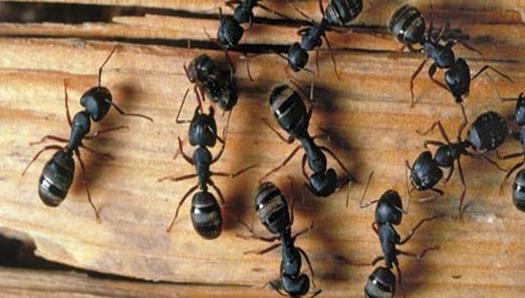Carpenter Ant
Carpenter ants are among the most conspicuous of ants found in and around homes, being large and typically blackish or very dark bodied. Most carpenter ants can be easily distinguished from other species of ants by their large size, up to 1/2 inch long. Carpenter ants cannot sting but if handled can inflict a painful bite with their powerful jaws. They emit a noxious excretion of formic acid when disturbed. Winged ants, which leave the nest to mate and establish new colonies, are sometimes confused with termites.
Damage
Carpenter ants are of economic importance because of the damage they do to structures, the food they contaminate, and their unsightly and unwanted movement inside and outside of building. Indoor carpenter ant nests are bored into wooden parts of the building, sometimes causing serious structural damage. Their nesting activities can weaken building structures, although not usually as seriously as termites. This damage can often be considered primarily a symptom of water damage and wood decay, as they usually will not extend galleries far beyond this softened wood and into the sound wood of structures.
Biology & Life Cycle
Carpenter ants feed on both dead and living insects, aphid and scale honeydew, and juices of ripe fruit. Carpenter ants excavate nest galleries in wood. These galleries somewhat resemble the work of termites but can be distinguished by their entirely clean and almost sandpapered appearance. Winged reproductive forms swarm primarily in the spring, but they may also do so at other times of the year. There is usually only one egg laying queen per colony. This takes 3 to 6 years for most colonies, at which time 2000 to 3000 individuals will be present. Alates swarm after spending the winter in the nest. From 200 to 400 winged individuals may be produced each year in a mature colony.
Control
Exclude carpenter ants from buildings by caulking cracks and blocking other entrances whenever possible. Eliminate food sources inside the building or prevent access to suitable food by keeping it in ant-proof containers. Eliminate damp conditions that promote wood decay. Replace decayed or damaged wood and correct problems that caused the decay, such as clogged rain gutters. Nests may be located by observing ant activity and following their trails, especially during the night because many species are nocturnal. To attract the ants, set out food such as a mixture of sugar and milk or sliced up crickets and then follow the workers back to the nest. Once colony openings are located, apply insecticide formulations, or desiccant dusts through these openings and other holes drilled into the galleries. Desiccant dusts are inert dusts combined with absorptive powders that destroy insects by absorbing their protective outer body cover, causing them to dry out, or desiccate. Slow-acting formulation baits can be used to control carpenter ants so that the ants can carry it back to reproductives and larvae deep inside the nest. Carpenter ants can be finicky eaters, first attract them to a nontoxic food like a sugar-milk solution or sliced crickets. Once they are feeding from this food source, replace it with several different toxic baits that are labeled for ant control, and let them choose the one they prefer.








